How to Turn Voice Recording Back on in Duolingo
On Windows 10, the Voice Recorder app is a quick and convenient solution that anyone can use to record lectures, conversations, interviews, podcasts, and virtually anything else.
Although you can find many other applications with many different features, the free Voice Recorder app included on Windows 10 is simple and ships with all the necessary functionalities to record, trim, flag important moments, and share audio tracks.
In this Windows 10 guide, we will walk you through the steps to use the Voice Recorder app on your computer.
How to add Voice Recorder app on Windows 10
Voice Recorder comes installed on Windows 10, but you will have to install it manually if you don't have it.
To install the app to record voice, use these steps:
- Open the Windows Voice Recorder download page.
-
Click the Get button.
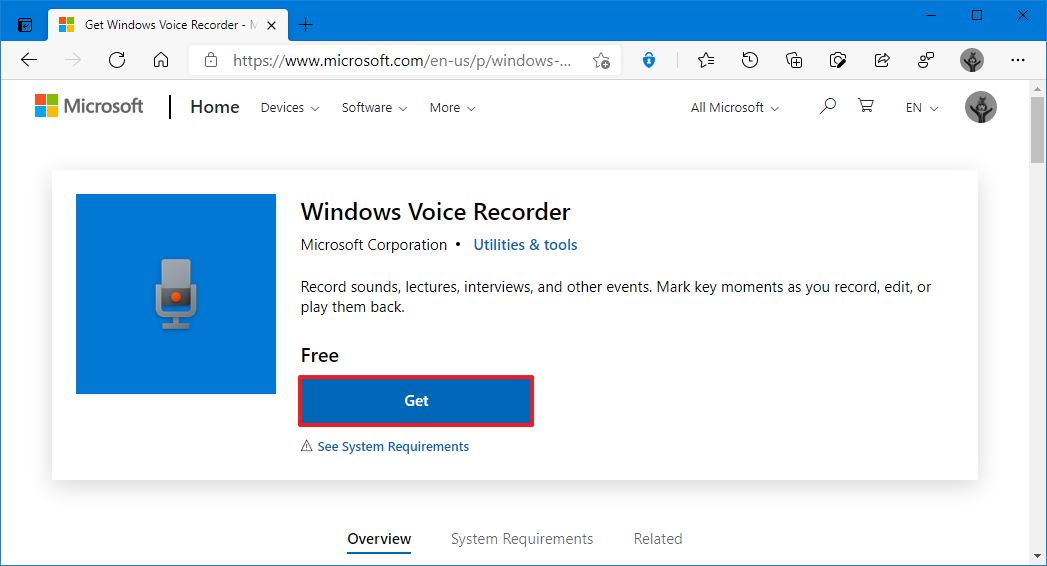 Source: Windows Central
Source: Windows Central - Click the Open button (if applicable).
- Click the Get\Install button.
Once you complete the steps, the app will be available from the Start menu to record audio on your desktop or laptop.
How to use Voice Recorder app on Windows 10
On Windows 10, Voice Recorder is a straightforward app. You only need one of the best microphones. The one built-in on your device, the one from a webcam, or any microphone will do just fine for basic recording.
The instructions below include everything you need to get started recording, listing, and editing sound files.
Record audio
To record audio on Windows 10, make sure the microphone is connected (if applicable), and use these steps:
- Open Start.
- Search for Video Recorder, and click the top result to open the app.
-
Click the Record button.
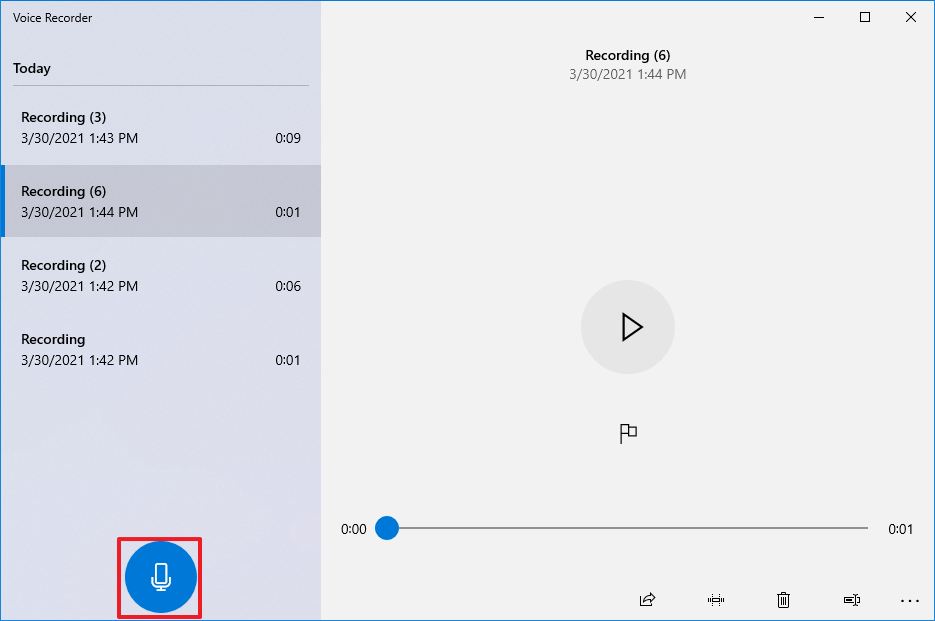 Source: Windows Central
Source: Windows Central Quick tip: You can also start recording using the Ctrl + R keyboard shortcut.
-
(Optional) Click the Flag button to add a marker to the recording.
Quick note: This option won't interrupt the audio recording, but you can quickly jump to important parts of the recording when editing the track. You can use the marking feature while recording or listening to the audio file.
- (Optional) Click the Pause button (or Alt + P keyboard shortcut) to stop recording without terminating the session. (This option will keep the recording in a single file.)
-
Click the Stop button to end the voice recording.
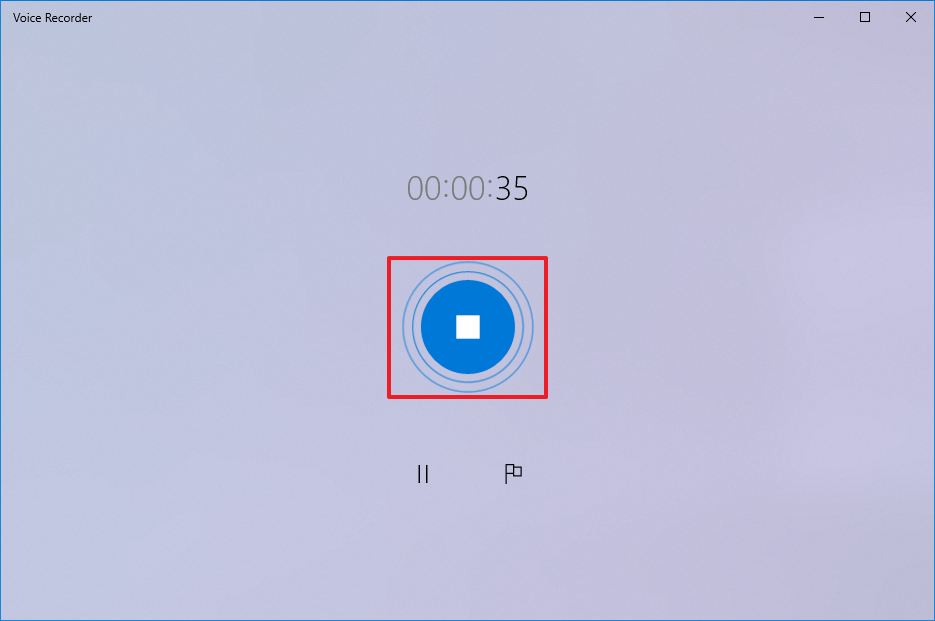 Source: Windows Central
Source: Windows Central Quick note: You can also use the Spacebar, Backspace, Enter, or Esc key to stop recording.
Once you complete the steps, the audio will save automatically using a .m4a file format in the "Sound recordings" folder inside the "Documents" folder.
If you need the best microphone, we recommend the Blue Yeti Nano since it offers good quality sound and a relatively low price.
Budget friendly
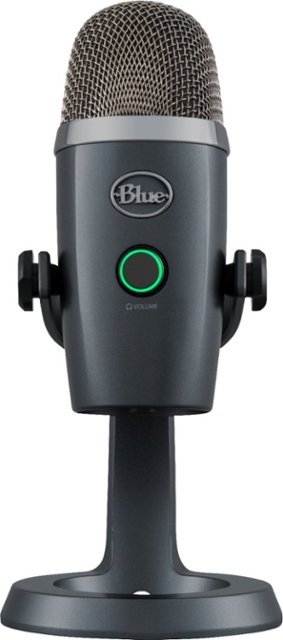
Blue Yeti Nano
The Blue Yeti Nano has impressive sound and built quality considering its price. It's a USB-powered plug-and-play device, and it features no-latency headphone output, headphone volume, and mute button.
Play audio recordings
To play recorded audio tracks on Windows 10, use these steps:
- Open Start.
- Search for Video Recorder, and click the top result to open the app.
-
Select the track from the left pane to play the audio.
 Source: Windows Central
Source: Windows Central - Click the Pause/Play button as necessary.
Once you complete the steps, click the Pause button to stop listening or select another recording from the playlist.
Trim audio recording
To trim an audio track after a recording session, use these steps:
- Open Start.
- Search for Video Recorder, and click the top result to open the app.
- Select the recording from the left pane.
-
Click the Trim button from the bottom-right corner.
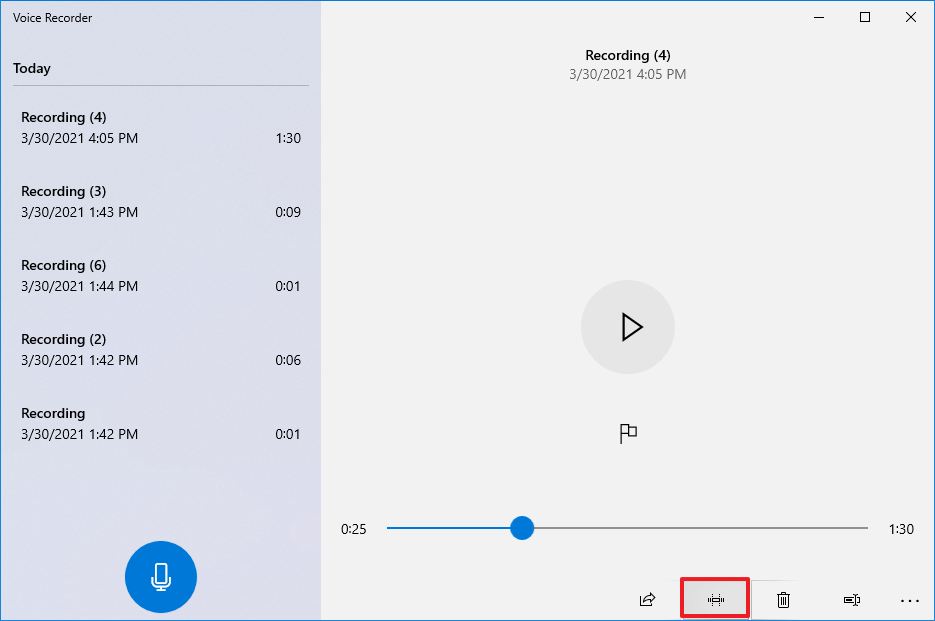 Source: Windows Central
Source: Windows Central -
Use the pins in the track to select the beginning and end of the recording, leaving out the parts you want to trim.
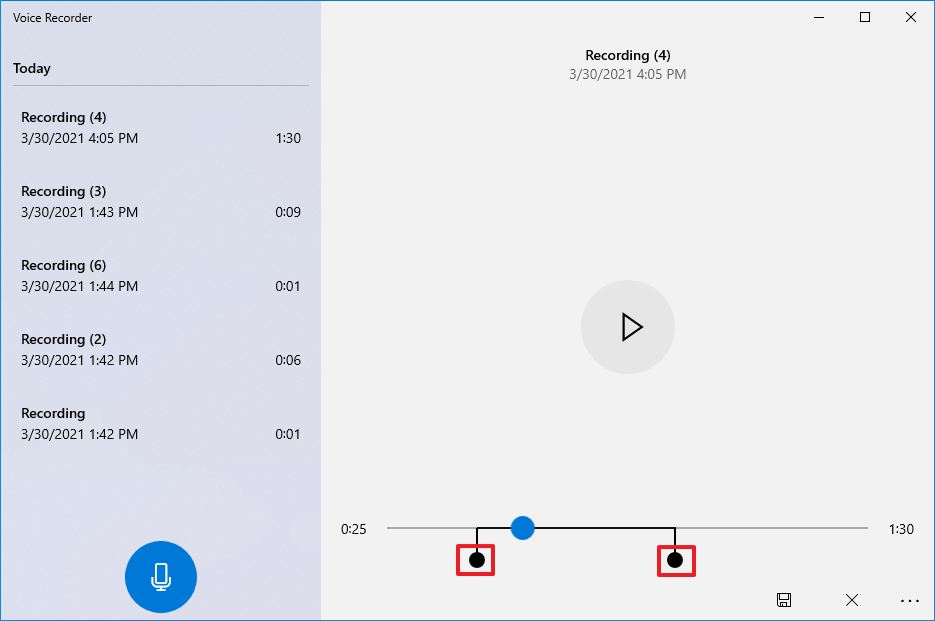 Source: Windows Central
Source: Windows Central - Click the Save (floppy) button from the bottom-right corner.
-
Select the Save a copy (recommended) or the Update original option.
 Source: Windows Central
Source: Windows Central
After you complete the steps, you will end up with a shorter version of the file.
Rename audio files
Although the app saves every recording file automatically, it uses generic names, which are not descriptive enough to keep your recordings organized.
To rename a recording file on Windows 10, use these steps:
- Open Start.
- Search for Video Recorder, and click the top result to open the app.
- Select the recording from the left pane.
- Click the Rename button in the bottom right corner.
- Type a descriptive name for the file — for example, interview_satya_nadella_april2021.
-
Click the Rename button.
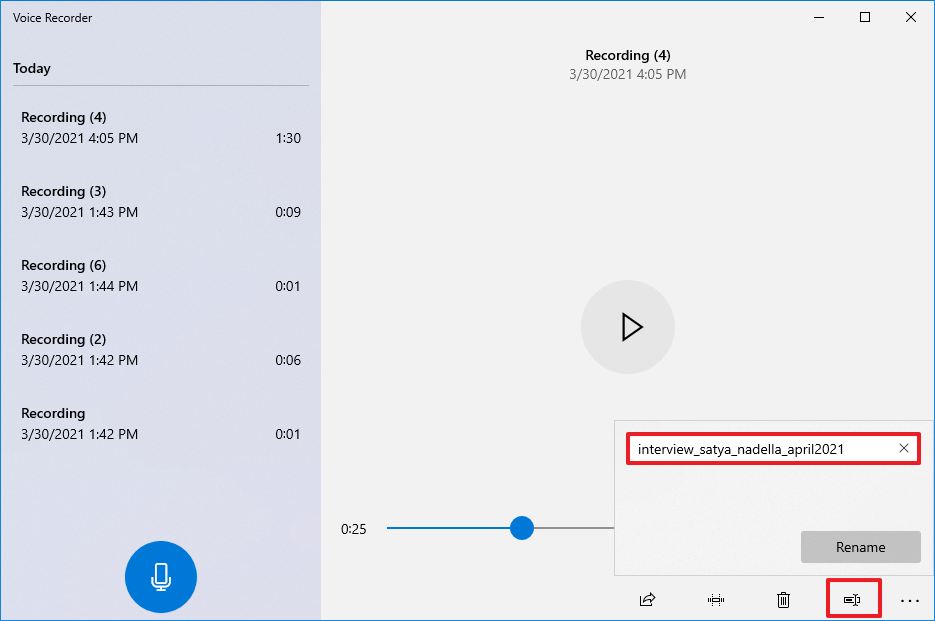 Source: Windows Central
Source: Windows Central
Once you complete these steps, the audio file will be saved with the name you specified in the "Sound recording" folder inside the "Documents" folder.
Share audio recording
To share a recording on social media or email, use these steps:
- Open Start.
- Search for Video Recorder, and click the top result to open the app.
- Select the recording from the left pane.
-
Click the Share button from the bottom-right corner.
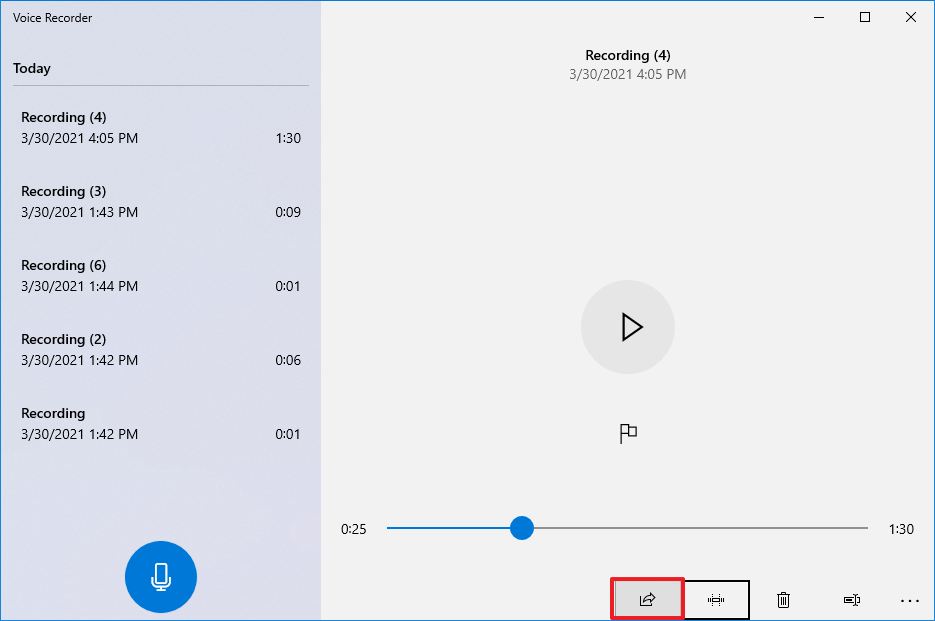 Source: Windows Central
Source: Windows Central - Select the app to share the audio file.
- Continue with the on-screen directions to share the audio file.
If you have to import the audio file into another project, you do not need to share it. Instead, copy and paste the file from the "Sound recordings" folder to your "Documents" folder or any other location.
How to fix Voice Recorder app problems on Windows 10
In the event that the app is not working, there is likely a problem with the microphone or privacy settings on Windows 10.
Fix Voice Recorder microphone access
To allow the Voice Recorder app to access the microphone, use these steps:
- Open Settings.
- Click on Privacy.
- Click on Microphone.
- Under the "Allow access to the microphone on this device" section, click the Change button.
- Turn on the Microphone for this device toggle switch.
-
Under the "Allow apps to access your microphone" section, make sure the toggle switch is in the On position.
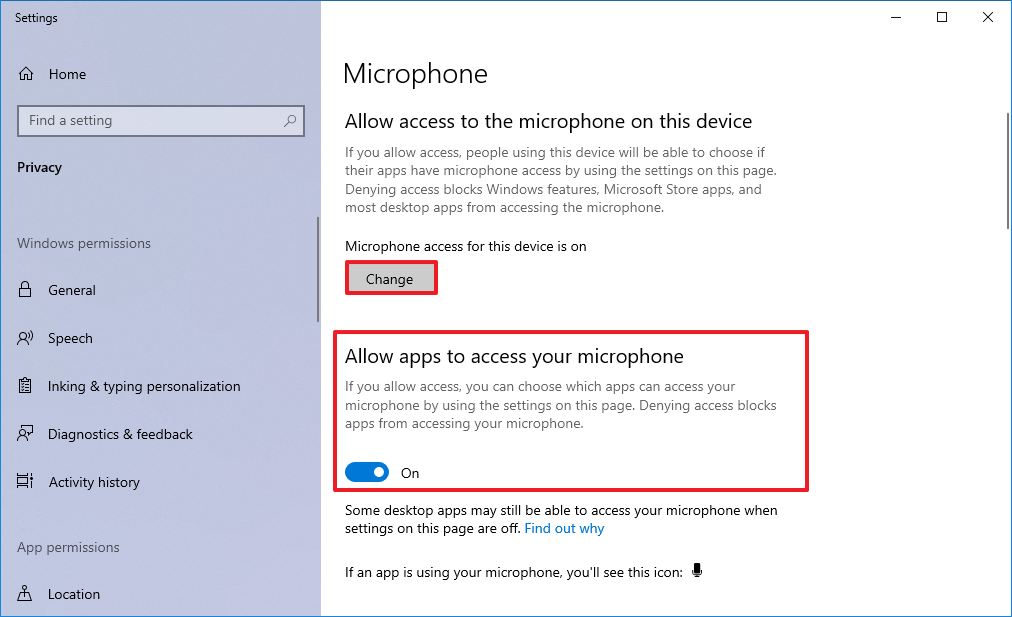 Source: Windows Central
Source: Windows Central -
Under the "Choose which Microsoft Store apps can access your microphone" section, turn on the Voice Recorder toggle switch.
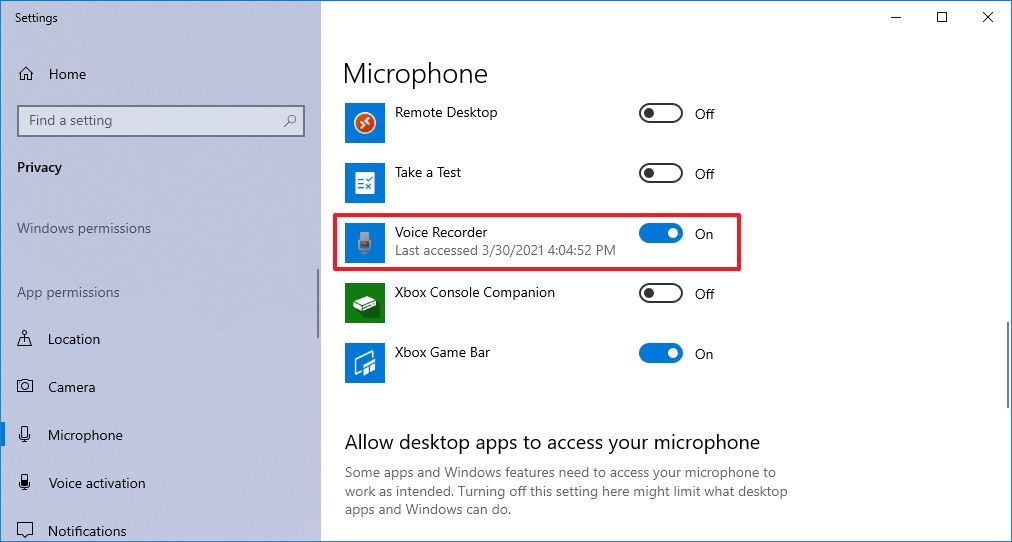 Source: Windows Central
Source: Windows Central
After you complete the steps, the app should now be able to record audio from the microphone.
Fix microphone problems
If the app can't find the microphone, you can use the "Sound" troubleshooter to fix this problem.
To fix microphone problems on Windows 10, use these steps:
- Open Settings.
- Click on Update & Security.
- Click on Troubleshoot.
-
Click the Additional troubleshooters option.
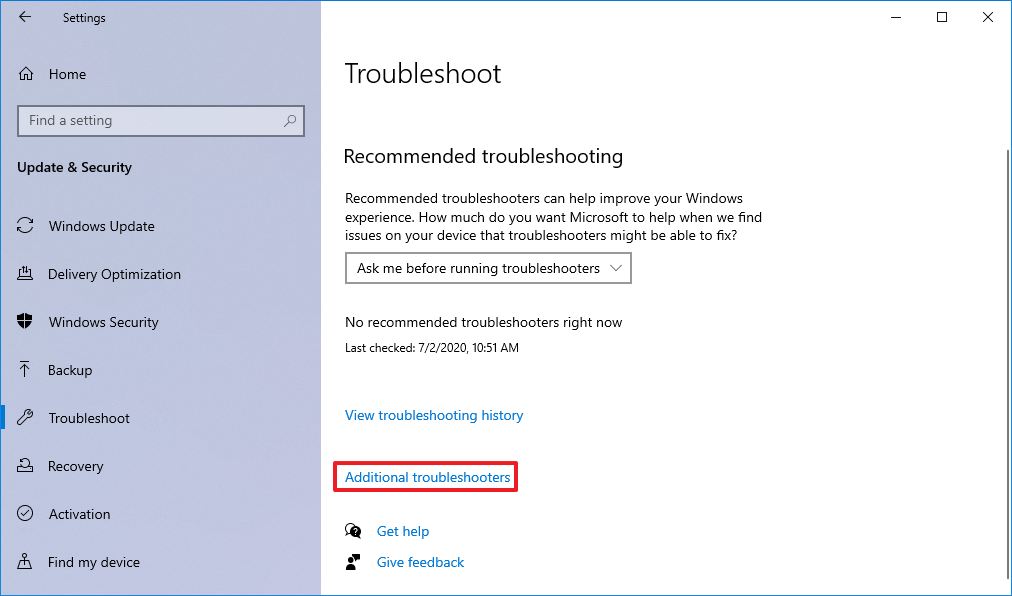 Source: Windows Central
Source: Windows Central - Under the "Fin and fix other problems" section, select the Recording audio option.
-
Click the Run the troubleshooter button.
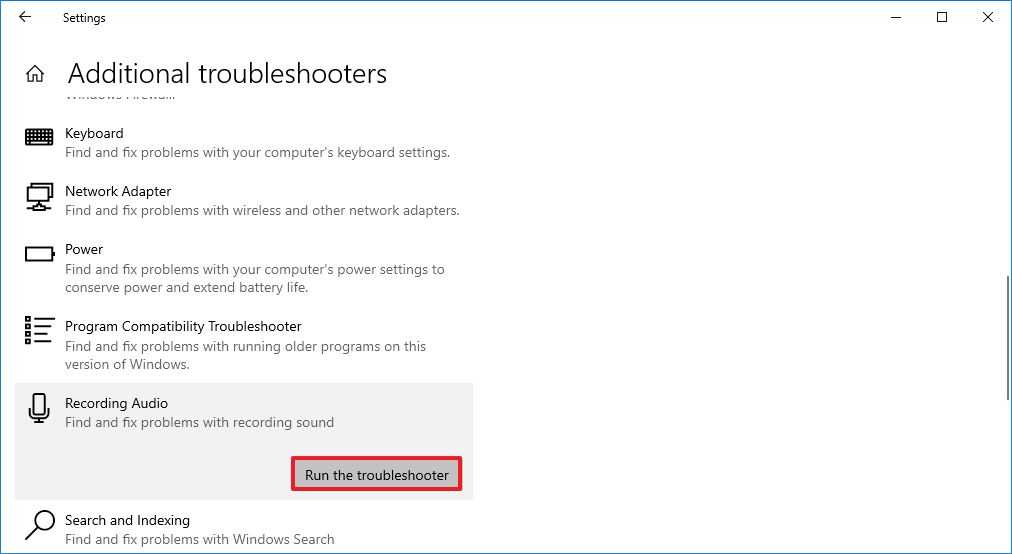 Source: Windows Central
Source: Windows Central - Select the microphone having the issue.
-
Click the Next button.
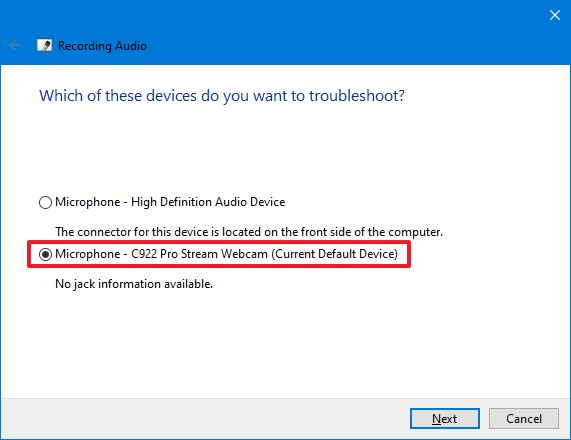 Source: Windows Central
Source: Windows Central - Continue with the on-screen directions to resolve the problem.
Once you complete the steps, any problems with the microphone should be resolved, and Voice Recorder should now work correctly.
If the microphone still does not work, check it is connected properly to the computer. In the case that you have multiple microphones, you can use these steps to set the system default. If it is a USB microphone, you can try a different port on the device or USB cable.
In the case that you have a Bluetooth microphone, confirm it appears on Settings > Devices > Bluetooth & other devices. Also, make sure that Bluetooth is enabled on your device from the settings page. You can learn more about using Bluetooth in this comprehensive guide.
More Windows 10 resources
For more helpful articles, coverage, and answers to common questions about Windows 10, visit the following resources:
- Windows 10 on Windows Central – All you need to know
- Windows 10 help, tips, and tricks
- Windows 10 forums on Windows Central
We may earn a commission for purchases using our links. Learn more.
How to Turn Voice Recording Back on in Duolingo
Source: https://www.windowscentral.com/how-record-sound-using-voice-recorder-app-windows-10














0 Response to "How to Turn Voice Recording Back on in Duolingo"
Enviar um comentário